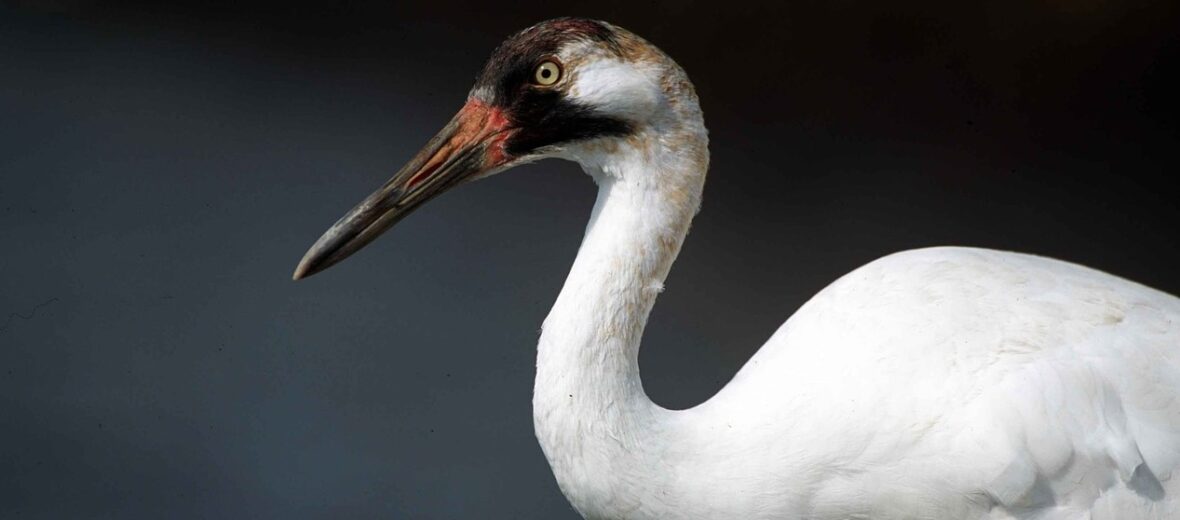
Out of the world’s known 15 crane species, the endangered whooping crane is among the rarest. As of 2020, there were an estimated 25 new breeding pairs from 125 birds. The whooping crane is North America’s tallest bird, standing at over 5 feet tall! Even though they are associated with marshlands, they actually prefer grasslands. These birds are named for their whooping unison calls. These birds are migratory, although there is a permanent population in Florida. Whooping cranes are listed as Endangered by the IUCN.
First the Stats…
Scientific name: Grus americana
Weight: Up to 19 lbs.
Height: Up to 5.2 feet
Wingspan: Up to 7.5 feet
Lifespan: Up to 24 years
Now on to the Facts!
1.) With low population numbers, and the ever-growing threat of loss of habitat, along with hunting pressures nearly caused the Whooping Crane’s extinction in the early 1900s.
2.) In Texas, the whooping crane will feed exclusively on wolfberries and blue crabs. In Canada they eat crustaceans, snails, minnows, aquatic insects, frogs, small reptiles, and even snakes.
3.) As they get to adulthood, they get a red skin patch on their forehead, black “mustache”, and black legs; plus black wing tips, which can be seen while in flight.
4.) When the Endangered Species Act was finally passed in 1973, there were fewer than 50 cranes in the wild!
5.) The last remaining whooping crane flocks migrate over 2,500 miles from their breeding grounds in western Canada to winter around the coastal wetlands and grasslands in southern Texas.
But wait, there’s more on the whooping crane!
6.) Their breeding range reaches from Manitoba, Saskatchewan, and Alberta down to central Illinois, Iowa, North Dakota, and Minnesota.
7.) The female whooping crane typically lays 2 eggs per clutch.
Did you know…?
By circa 1940s, this crane was nearly wiped out, due to over hunting and habitat destruction. They were down to just 15 individuals!
8.) In captive breeding programs, keepers will promptly remove the newly hatched eggs and place them into an incubation chamber. The removal of the eggs causes the pair to begin breeding again. “Thanks. Now, back to work. We’ve got your species to save!”
Now a Short Whooping Crane Video!
Also, check out the Critter Science YouTube channel. Videos added frequently!
Want to suggest a critter for me to write about? Let me know here.



